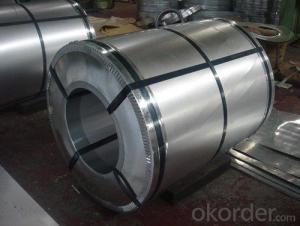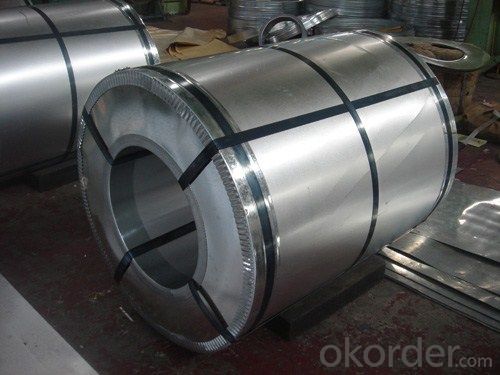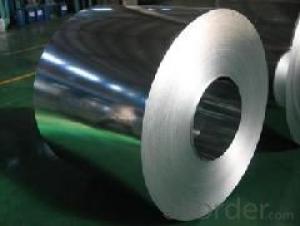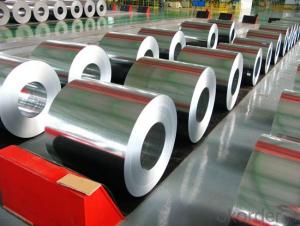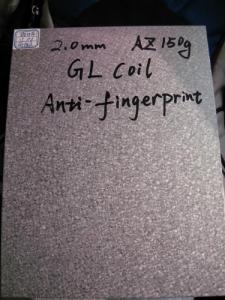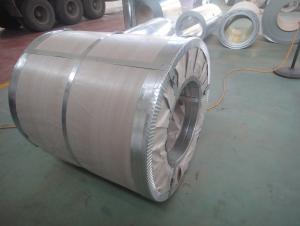Galvalume Hot Dip Galvanized Steel Sheet in Coils
- Loading Port:
- China main port
- Payment Terms:
- TT OR LC
- Min Order Qty:
- 50 m.t.
- Supply Capability:
- 10000 m.t./month
OKorder Service Pledge
OKorder Financial Service
You Might Also Like
Galvalume Steel Sheet in Coils with Prime Quality and Best Price
Product Description:
Structure:
Hot-dip galvanized steel coils are available with a pure zinc coating through the hot-dip galvanizing process. It offers the economy, strength and formability of steel combined with the corrosion resistance of zinc. The hot-dip process is the process by which steel gets coated in layers of zinc to protect against rust. It is especially useful for countless outdoor and industrial applications. Production of cold formed corrugated sheets and profiles for roofing, cladding, decking, tiles, sandwich walls, rainwater protective systems, air conditioning duct
Main Features:
• Excellent process capability
• Smooth and flat surface
• Workability, durability
• Excellent anticorrosive property
• High strength
• Good formability
• Good visual effect
Specification:
Standard: ASTM, JIS,EN
Grade: CS, DX51D+Z,SGCC, SS 230~550,S220GD+Z~S550GD+Z, SGC340~SGC570
Thickness: 0.1mm~5mm
Width: max 2000mm
Coil weight:3-12 MT
Coil ID:508/610mm
Surface structure: zero spangle, regular spangle or minimum spangle
Surface treatment: Chromate treatment, Oiled/dry, skinpassed/non-skinpassed
Packing: Standard seaworthy export package
Technology test results:
Processability | Yield strength | Tensile strength | Elongation % | 180°cold-bending |
Common PV | - | 270-500 | - | d=0,intact,no zinc removal |
Mechanical interlocking JY | - | 270-500 | - | d=0,intact,no zinc removal |
Structure JG | >=240 | >=370 | >=18 | d=0,intact,no zinc removal |
Deep drawn SC | - | 270-380 | >=30 | d=0,intact,no zinc removal |
EDDQ SC | - | 270-380 | >=30 | d=0,intact,no zinc removal |
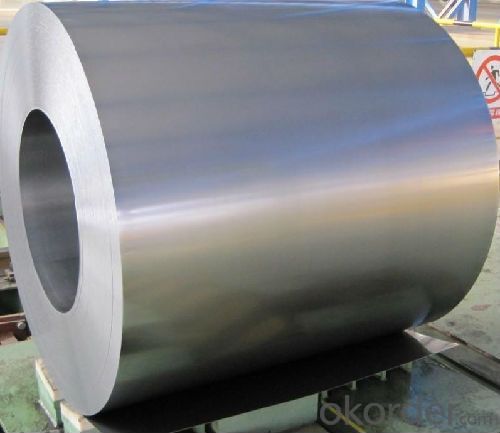
- Q: I'm building a single-speed commuter bike and I was wondering what the advantages and disadvantages of steel and alloy wheels are. Any experts out there who can give me specifics for each kind?
- Alloy Bike Wheels
- Q: and also what makes different hardness of stainless steel?
- The person above me is right .The stainless steel is used in shaving blades
- Q: How are steel coils used in the production of steel connectors?
- Steel coils are used in the production of steel connectors as they are formed into specific shapes and sizes, such as plates or bars, which are then cut, bent, and welded to create the connectors. The coils provide a continuous and easily manageable supply of steel material, allowing for efficient and precise manufacturing processes.
- Q: what is tool steel and does it function better than carbon or spring steel?
- NO. Tool steel is very hard and brittle. Carbon spring steel is better but rusts. Stainless steel is weather resistant. A mix like those for knives are good. For the ultimate, do the japanese way of folding it hundreds of times, then, use three different types of steel. For the center and the back a softer and flexible steel, for the edge hard to keep its edge, and an outer layer to take some weathering.
- Q: How does the steel coil market vary regionally?
- The steel coil market varies regionally based on factors such as demand, production capacity, and market dynamics. Different regions have different levels of industrial development and infrastructure, which can affect the demand for steel coils. Additionally, variations in raw material availability, labor costs, and government policies also contribute to regional differences in the steel coil market. For example, developing regions may have higher demand for steel coils due to infrastructure projects, while mature markets may focus on specialized steel coil products for specific industries. Overall, regional variations in the steel coil market reflect the unique economic and industrial characteristics of each region.
- Q: I Don't have a Oxy act. torch but can Get a Propane one. The finished part(s) are .375 x .550 x .185
- I think 12L14 is NOT heat hardenable, because it is low-carbon. You may try heating and quenching it, but it won't harden much. It can be hardened by cold-working - drawing or rolling processes. However, these are usually done by the material manufactures, and most machine shops do not have the capability to do this in house. Can you try 1144 steel instead? 1144 is medium-carbon (0.44%), and heat treatable. It is also free machining grade like 12L14. Other medium carbon steels are also heat hardenable: 1040, 1050, etc.
- Q: How do steel coils contribute to energy savings in buildings?
- Steel coils contribute to energy savings in buildings through their use in HVAC systems. These coils are commonly used in air conditioning units and heat pumps, where they help transfer heat between the indoor and outdoor environments. By efficiently absorbing and dissipating heat, steel coils enable HVAC systems to regulate the temperature inside the building more effectively, reducing energy consumption and costs. Additionally, the durability and long lifespan of steel coils minimize the need for frequent replacements, further contributing to energy savings in the long term.
- Q: What is the maximum temperature steel coils can withstand?
- The maximum temperature that steel coils can withstand depends on the specific type of steel and its intended application. However, generally speaking, steel coils can withstand temperatures ranging from around 500 to 1200 degrees Celsius (932 to 2192 degrees Fahrenheit).
- Q: I need help my new stainless steel cookware is sticking ? My first meal was nasty!
- One of two things can cause this. Either your pan bottoms are light weight, or you are cooking at too high a temperature.
- Q: What are the common coil defects and their causes?
- Common coil defects include: 1. Coil breaks: These are caused by improper handling, excessive tension, or defects in the raw material. They result in breaks or fractures in the coil. 2. Edge waves: Edge waves occur due to uneven tension during winding, improper coil alignment, or excessive elongation. This leads to wavy or uneven edges in the coil. 3. Buckling or wrinkling: Buckling or wrinkling can be caused by excessive elongation, improper winding tension, or uneven cooling. It results in irregularities or folds in the coil surface. 4. Slivers: Slivers are thin strips of material that can be present on the surface of the coil. They are typically caused by poor shearing or cutting processes, improper cleaning, or debris in the production line. 5. Oil spots: Oil spots are oily or greasy stains that can appear on the coil surface. They are usually caused by inadequate cleaning or lubrication during the manufacturing process. 6. Coating defects: Coating defects can include uneven or inconsistent coating, bubbles, or peeling. These defects can be caused by issues with the coating application process, improper drying or curing, or contamination in the coating material. It is important to address these coil defects promptly to ensure product quality and prevent further issues during subsequent processing or usage.
Send your message to us
Galvalume Hot Dip Galvanized Steel Sheet in Coils
- Loading Port:
- China main port
- Payment Terms:
- TT OR LC
- Min Order Qty:
- 50 m.t.
- Supply Capability:
- 10000 m.t./month
OKorder Service Pledge
OKorder Financial Service
Similar products
Hot products
Hot Searches
Related keywords
